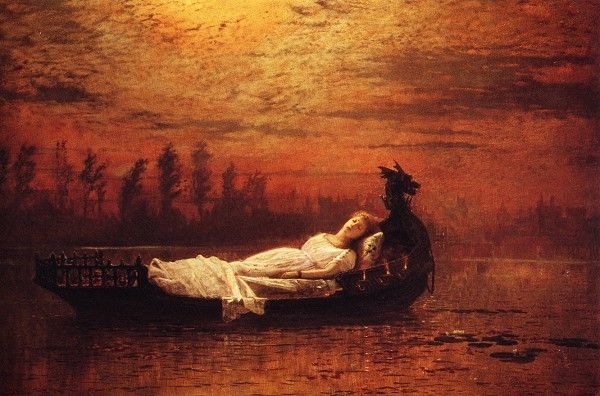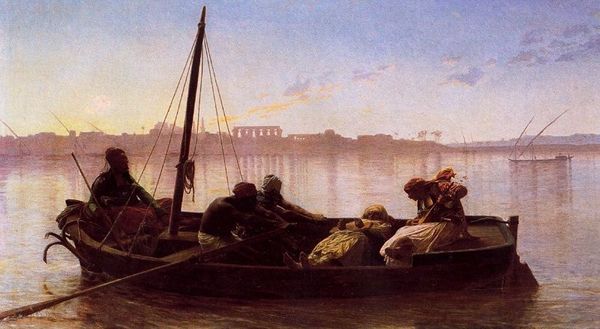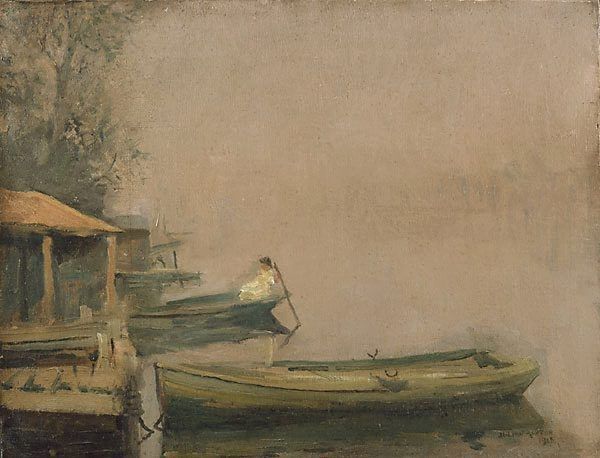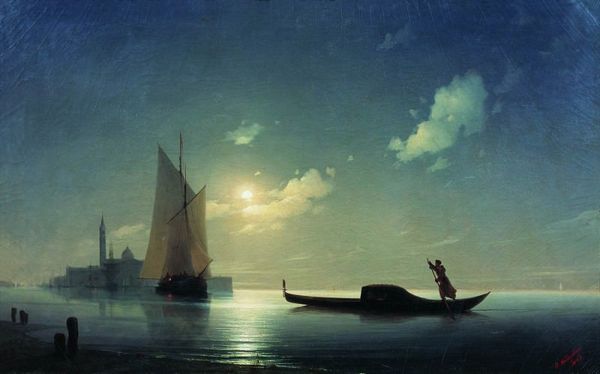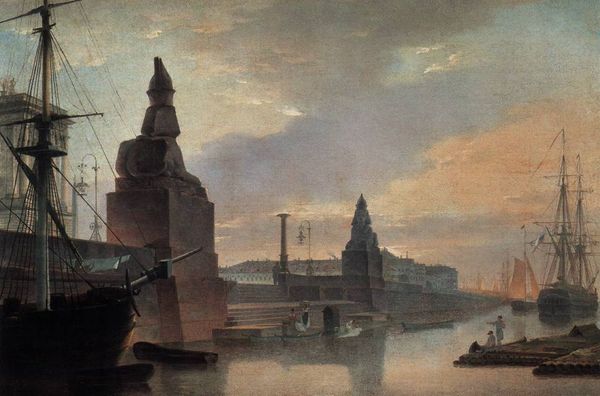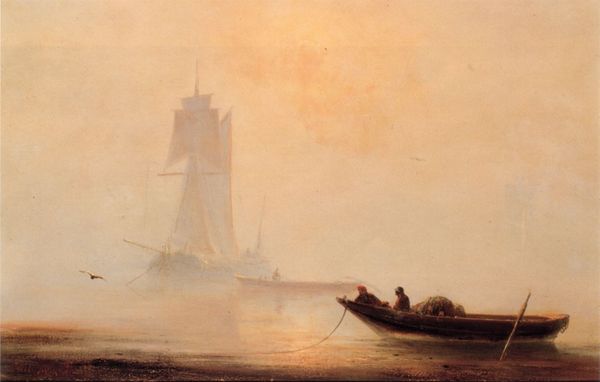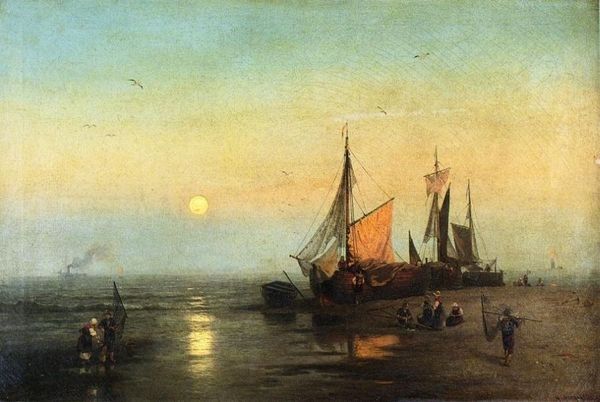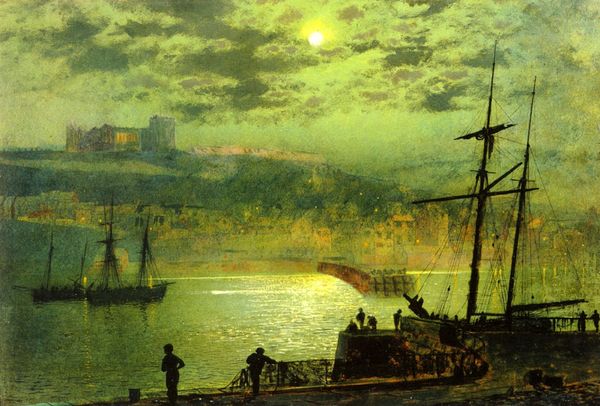
Dimensions: 121.9 x 83.2 cm
Copyright: Public domain
Curator: Welcome. Here we have John Atkinson Grimshaw's "Elaine," created in 1877 using oil on canvas. Editor: Oh, what a beautifully somber scene! The light—that golden, hazy light—it's like the world is holding its breath. Everything feels suspended in a dream, or perhaps a nightmare. Curator: Indeed. Grimshaw masterfully employs chiaroscuro to amplify the painting's dramatic effect. Observe how the subtle gradations of light and shadow articulate form, particularly across the draped figure of Elaine and the sculptural details of the boat. Editor: That boat! It’s straight out of a myth, isn't it? A swan, or maybe even a dragon with those incredible wings. And the woman... she looks so still, almost like a porcelain doll laid to rest upon rich velvet. I can't help but think of Ophelia, adrift. Curator: The artist draws directly from Tennyson's "Idylls of the King," specifically the tragic tale of Elaine of Astolat. The boat is, quite literally, a floating bier, carrying Elaine’s body to Camelot after her unrequited love for Lancelot drives her to her death. Editor: Unrequited love... so dramatic. You feel her sorrow acutely in this piece, though, don't you? It's not just pretty; it's heavy with grief and longing. It is interesting to think how art turns such sorrowful tales into poignant reflections on our own human experiences. Curator: Absolutely. Grimshaw encapsulates the Pre-Raphaelite obsession with medieval romanticism, emphasizing a narrative imbued with sentiment and moral undertones. The detail, though seemingly excessive, adheres strictly to compositional principles that guide the eye across the somber journey depicted. Editor: Well, I think what strikes me most is how Grimshaw managed to turn a dark legend into something so hauntingly beautiful. Like capturing the last flicker of a dying candle. Curator: It’s an intersection of technique and emotional resonance that cements its place within late Victorian art, a potent representation of beauty born from tragedy. Editor: Right, an example of the magic when color and myth collide!
Comments
No comments
Be the first to comment and join the conversation on the ultimate creative platform.
